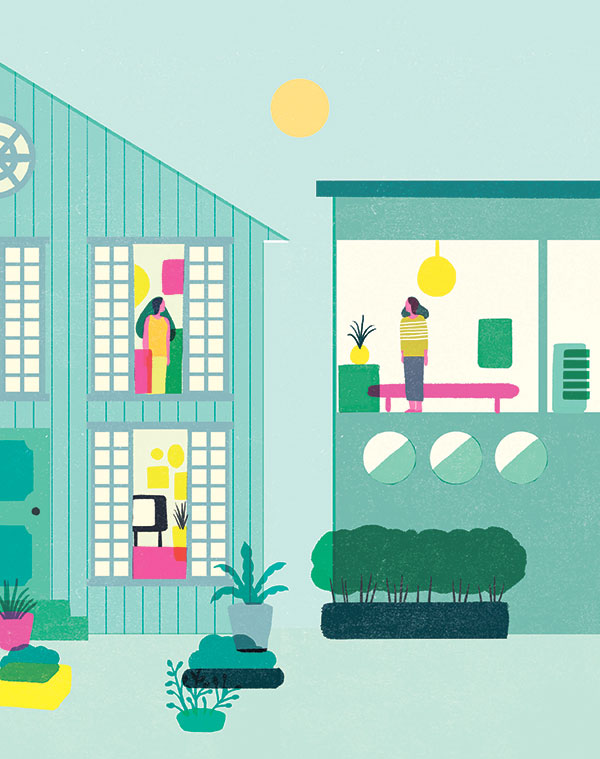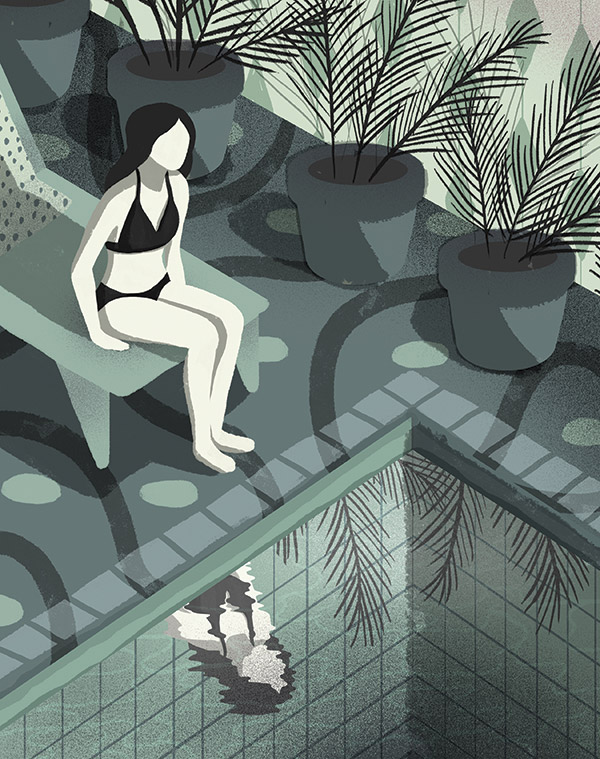The minimalist and maximalist
By Johanna Michelle Lim
IN this house, there is a perpetual battle of eras.

The porcelain tea cups sit alongside the compact discs and VHS tapes. An old Spanish galleon floats with a mermaid Barbie doll. Vinyl players and stereos. Typewriters and laptops. Century-old pianos and dirty laundry. They all reside in one home.
In the Philippines, it’s never about moving out, or moving on. What constitutes “moving out” is moving in to the next room, if you’re lucky. I think of my home more as a thrift shop, a gallery of past existence, more than an inhabited place.
The mother, born in the 60s, grew up with a collector’s sensibility. She kept stickers, books, signatures from classmates, stamps, bottles, dolphin figurines; in other words, any item that can be deemed as a collectible, and some questionable others that are not. She was taught that things of importance needed to be kept. Her flagstone for affection was when someone gave her a bit of their past as remembrance to a life lived. She herself pictures out the day when she passes on her heirlooms to the next generation, to her two children, who were raised in a different time.
“I don’t want them,” I jokingly tell her. As an 80s child, I grew up at the end trails of a materialistic age where accumulation was a way of life. Like my mother, I started collecting hats, watches, stationeries, bottles, PEZ toys, Archie comics. Most of these were backed by her willing purchases. They gathered in a room, becoming factoids classmates would share about me. I was always an ambiguous figure, preferring to absorb other’s people’s interests instead of sharing my own. So when they found out that odd detail, a bottle or two would pop up below my chair. Finally, I was someone concrete and describable. I was the girl who collected things.
By high school though, accumulation turned to claustrophobia. There was never any place to put them anymore. They constantly collected dust. They depreciated even when there was never a chance to use them yet. I was cloistered in a small room full of possessions that owned me. Could I really be simply the sum of all these things, these nothings? Even memory, their sheer weight, should sometimes be given away. Eventually, I bundled them up and passed them on in bulk.
The household, these days, continues to be a battleground between sentiment and pragmatism.
“You threw away my attaché case!” the mother complains during one of my purging expeditions, when I sneaked it into the trash bin.
“It’s cracked and old, and it’s starting to grow molds.” I tell her as she scavenges it out and puts the clunker back in her closet.
I tell my mother space itself, not so much what is in them, will be the ultimate luxury in a world that closes in, takes away your personal cosmos, day by day. Several years from now, we may even have to pay to take away the very possessions we’ve fought so hard to amass.
My ideal house, I picture out, is a place stripped down to bare essentials, a Mondrian painting where everything has place and purpose, something the painter said that’s “constructed with awareness, but not with calculation” to become something “as strong, as it is true.”
My five year old, a Millennial baby used to these battles by now, complains that our house is too small for our egos. It stores too many departed eras in its termite-worn walls. She once showed me a picture of what her dream home is. In a hap dash reconstruction, she shows me a structure with far too many windows, about ten abnormally cramped in a rectangular box with a pink roof. She explains that the first window was the room where she was going to practice her dancing. The second room was where she could practice her singing. Another room was where she could paint. And yet another room was where she could unwind, watch movies.
It occurred to me that her ideal house was where she might have enough stretch to accommodate her several selves, and that several selves could actually be accommodated in such an undiscriminating space. This is the extravagance of those with enough legroom to come into their own, unperturbed by the realities of what was left behind.
I tell my child with a voice loud enough for the mother to overhear that I will not give her anything else but genes and education. And when the years have opened more windows than she cares to look into, may she recognize that to in order to give her more, I gave her less.



